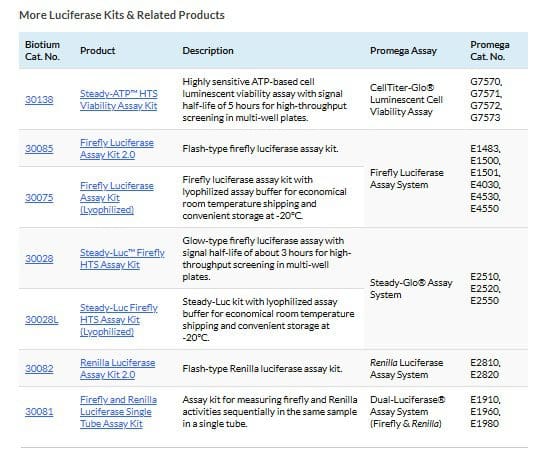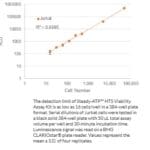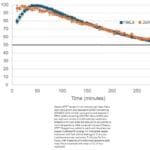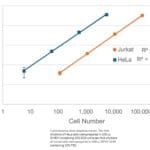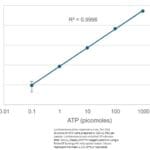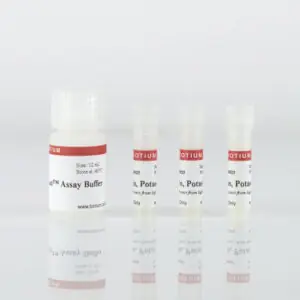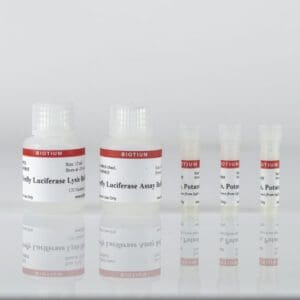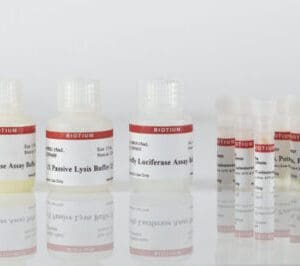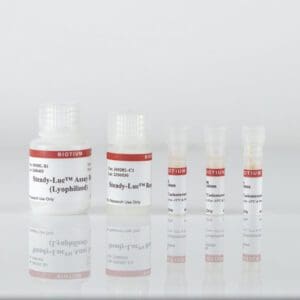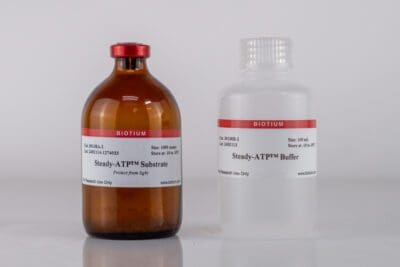
A luciferase-based ATP cell viability assay offering high sensitivity, wide dynamic range, and long-lasting signal for high-throughput luminescence detection in microplates.
| Name | SKU | Size | Availability | Vendor | Price | Order | |
Steady-ATP™ HTS Viability Assay Kit |
30138-1 | 120 assays | Generally 1-2 weeks from receipt of order | Biotium | Log in for pricing | ||
Steady-ATP™ HTS Viability Assay Kit |
30138-2 | 1000 assays | Generally 1-2 weeks from receipt of order | Biotium | Log in for pricing | ||
Steady-ATP™ HTS Viability Assay Kit |
30138-3 | 10,000 assays | Generally 1-2 weeks from receipt of order | Biotium | Log in for pricing |
Product Description
Steady-ATP™ HTS Viability Assay Kit is a highly sensitive ATP-based luminescent cell viability assay. Because ATP is an indicator of metabolically active cells, the number of viable cells can be assessed based on the amount of ATP available. This assay uses Chemostable Luciferase and an optimized lysis/assay buffer to generate stable luminescent signal in the presence of cellular ATP. Steady-ATP™ provides exceptional sensitivity with wide dynamic range for the determination of viable cell numbers for assessing cell proliferation or cytotoxic potential of compounds.
Features:
- Exceptional sensitivity, as few as 16 cells/well in a 384-well plate.
- Convenient single-step assay mix.
- Compatible for use with high-throughput screening platforms.
- Excellent linearity, over 3-4 orders of magnitude.
- Stable signal, with a half-life over 5 hours.
- Comparable performance to CellTiter-Glo® at a lower cost.
Kit Components:
- Steady-ATP™ Substrate
- Steady-ATP™ Buffer
A Sensitive and Robust Luminescent Cell Viability Assay
The Steady-ATP™ assay is a new and improved replacement for the ATP-Glo™ Bioluminometric Cell Viability Assay Kit (Cat. No. 30020). The homogeneous assay procedure involves a single addition of Steady-ATP™ Assay Mix directly to cells in cultured medium, with no washing or medium exchange required. This assay incorporates the use of an engineered Chemostable Luciferase with enhanced chemostability and thermostability to oxidize D-Luciferin in the presence of ATP resulting in the production of light.
The combination of Chemostable Luciferase with an optimized buffer designed to protect ATP from degradation after cell lysis generates luminescence signal with a half-life longer than 5 hours. The signal is linear over 3-4 orders of magnitude. The extended half-life provides flexibility for high-throughput screening (HTS) platforms that use continuous or batch-mode processing of plates without the need for reagent injectors.
Exceptional Sensitivity, as Few as 16 cells/well
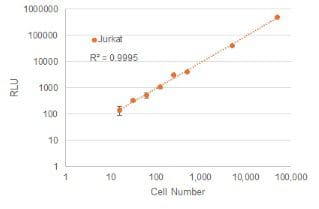
The detection limit of Steady-ATP™ HTS Viability Assay Kit is as low as 16 cells/well in a 384-well plate format. Serial dilutions of Jurkat cells were tested in a black solid 384-well plate with 50 uL total assay volume per well and 30-minute incubation time. Luminescence signal was read on a BMG CLARIOstar® plate reader. Values represent the mean ± S.D. of four replicates.
Robust Signal Half-Life ≥5 Hours
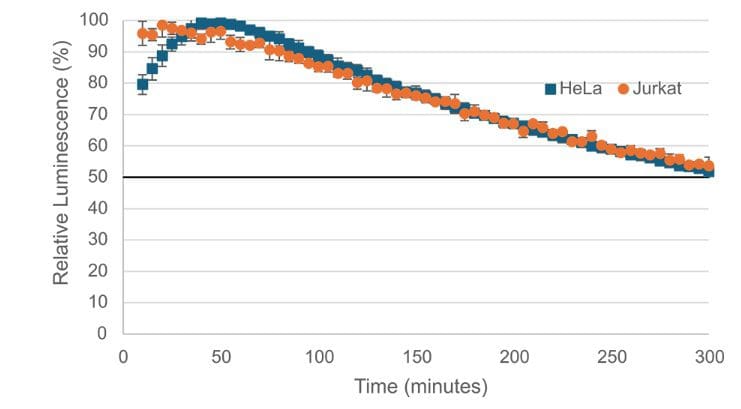
Steady-ATP™ assays in two common cell lines. HeLa cells were grown and assayed in DMEM containing 10% BGS while Jurkats were grown and assayed in RPMI 1640 containing 10% FBS. HeLa (6,000 cells per well) and Jurkats (12,000 cells per well) were added to a 96-well plate and allowed to equilibrate to room temperature. After an equal volume of Steady-ATP™ Reagent was added to each well, the plate was placed in a Biotek® Synergy H1 microplate reader and mixed with fast orbital shaking for 2 minutes. Luminescence was read every 5 minutes for five hours, with 5 seconds of orbital shaking before each read. Values represent the mean ± S.D. of four replicates.
Linear Signal Over 3-4 Orders of Magnitude
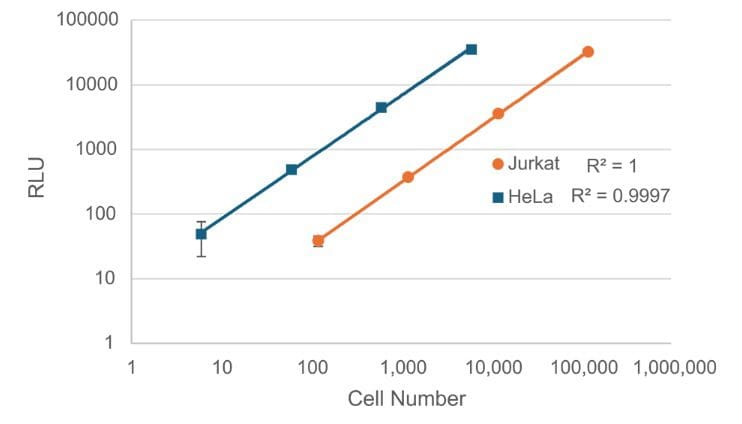
Luminescence dose response curves of Steady-ATP™ HTS Viability Assay. Ten-fold dilutions of HeLa cells were prepared in 100 uL DMEM containing 10% BGS while ten-fold dilutions of Jurkat cells were prepared in 100 uL RPMI 1640 containing 10% FBS.
